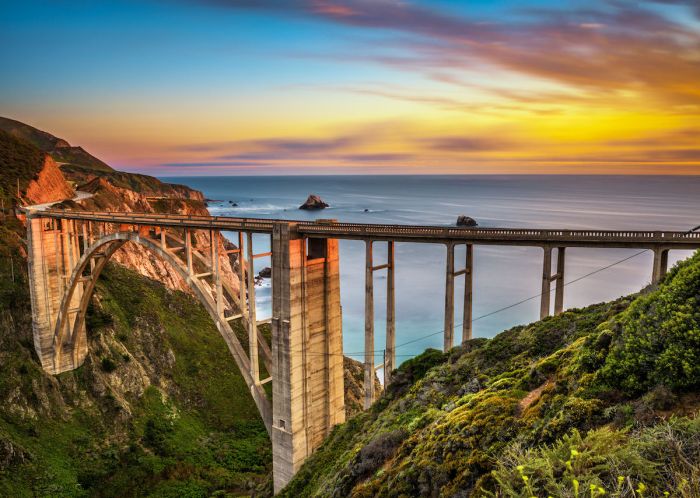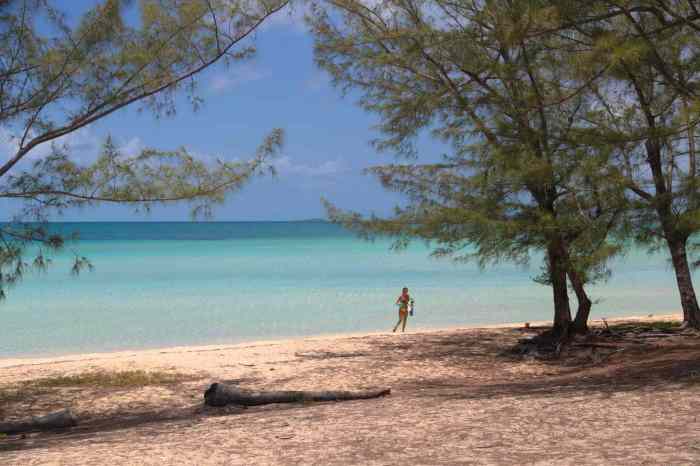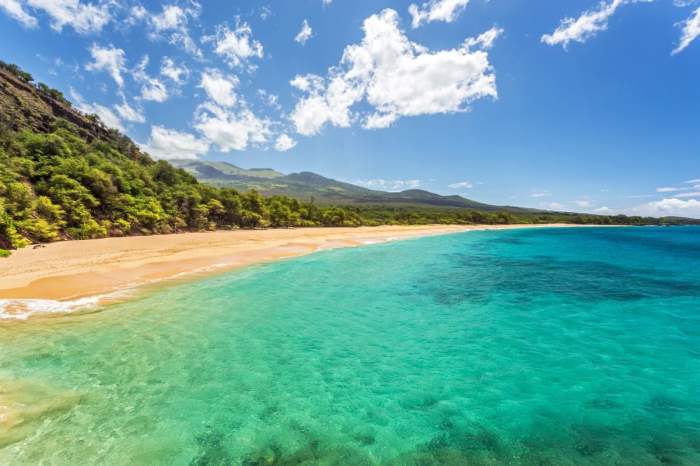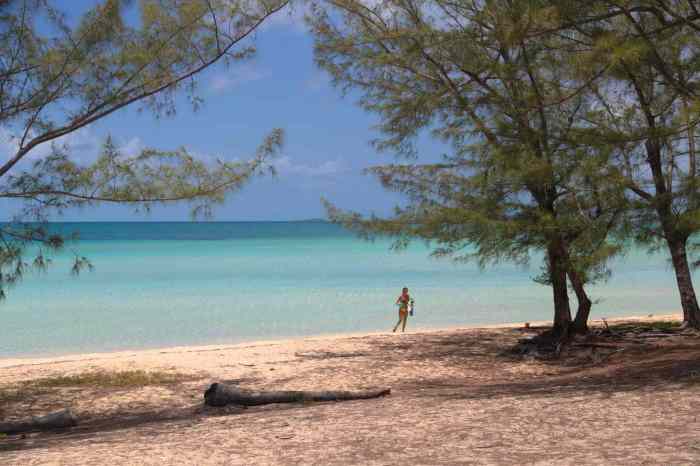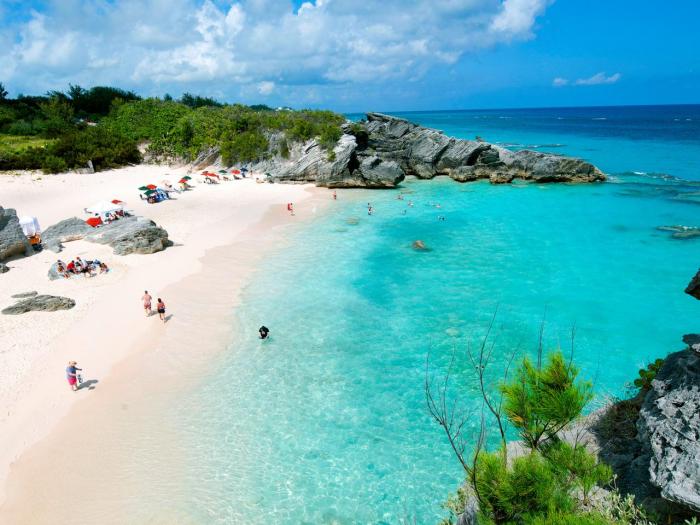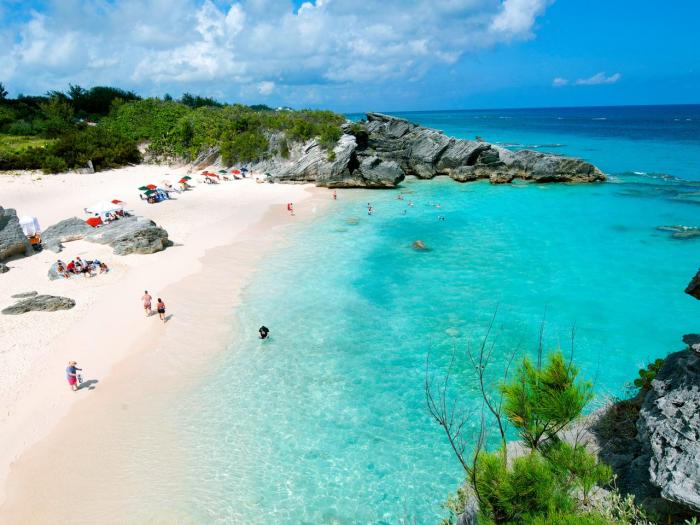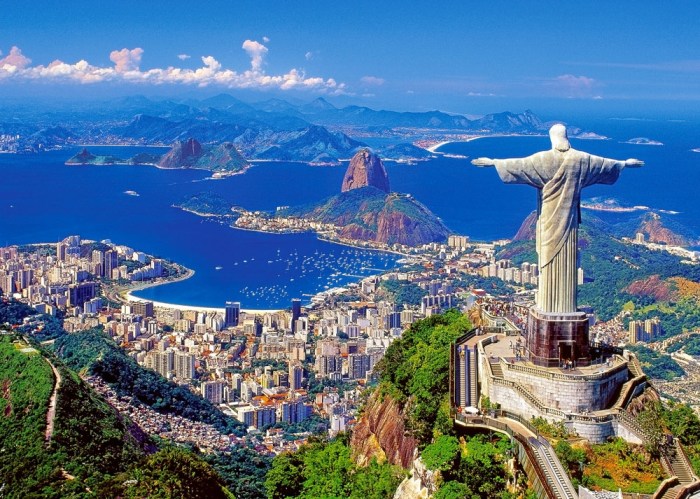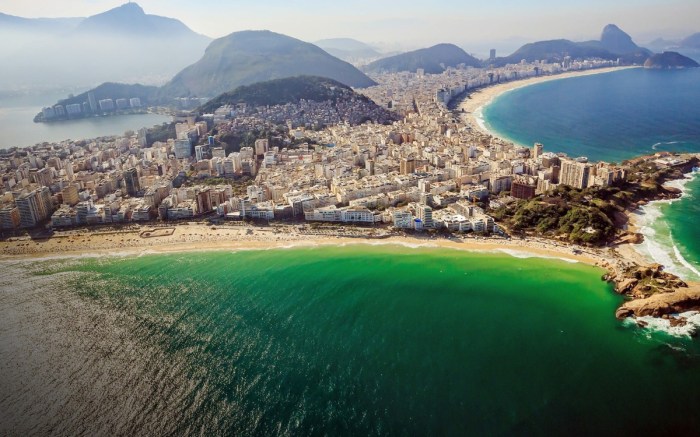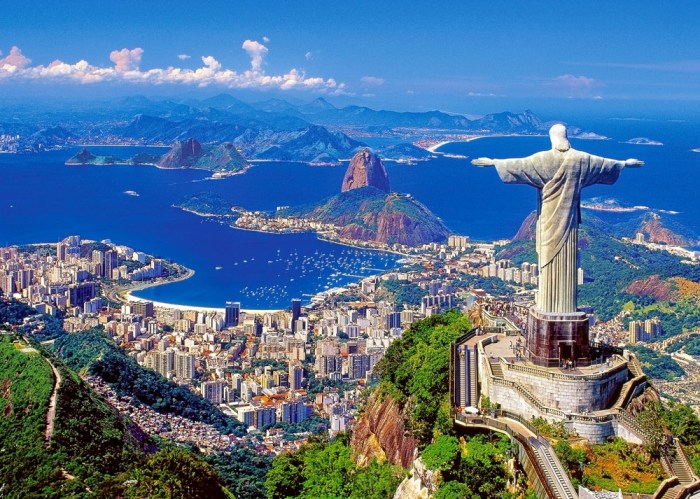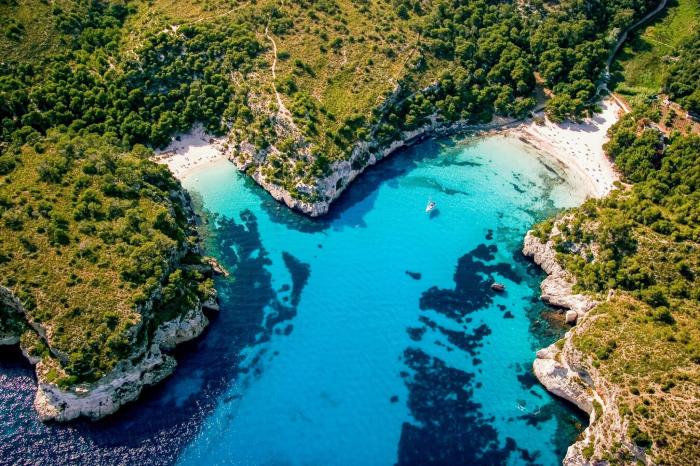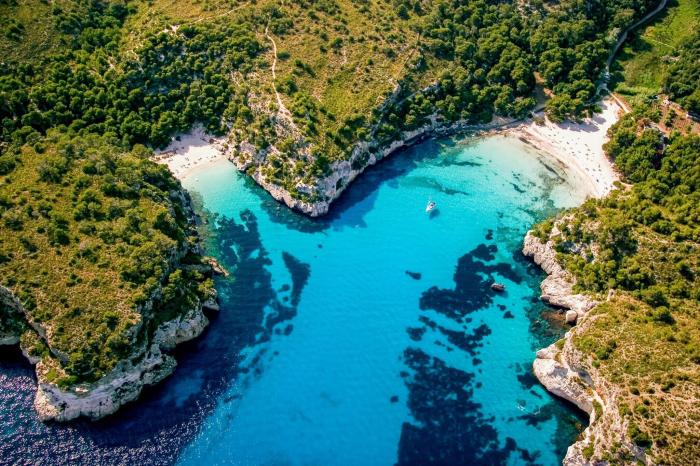Top things to do in California: From sun-drenched beaches to towering redwoods, California offers a breathtaking array of experiences for every traveler. This guide dives deep into the diverse landscapes and vibrant cities, highlighting iconic landmarks, coastal adventures, and unique hidden gems. Whether you’re seeking outdoor thrills, cultural immersion, or a relaxing beach getaway, California has something to captivate your wanderlust.
This comprehensive exploration will showcase the best of California’s attractions, from the majestic national parks to the bustling urban centers, offering practical tips and insights to make your trip unforgettable. We’ll explore the diverse culinary scene, uncover family-friendly destinations, and discover hidden gems that await those seeking unique adventures. Get ready to plan your Californian escapade!
Introduction to California Experiences
California, a land of breathtaking landscapes and vibrant cities, beckons travelers with a diverse array of experiences. From the towering redwood forests to the bustling streets of Hollywood, the Golden State offers something for every taste. Its appeal lies in the perfect blend of natural beauty, urban excitement, and cultural richness, making it a globally recognized tourist destination.California’s allure stems from its remarkable diversity.
The state’s varied topography, ranging from snow-capped mountains to sun-drenched beaches, creates an environment that supports a multitude of outdoor activities. Its significant cultural influences, reflecting its history as a melting pot of people and ideas, are evident in its diverse culinary scene, artistic expressions, and historical landmarks. This unique combination makes California an unforgettable destination for exploration.
Outdoor Adventures in California
California’s stunning natural beauty provides unparalleled opportunities for outdoor enthusiasts. Hiking, camping, and rock climbing are popular activities in national parks like Yosemite and Sequoia. The vast expanse of coastline offers opportunities for surfing, kayaking, and whale watching. These adventures allow visitors to immerse themselves in nature’s splendor.
- Yosemite National Park: Known for its towering granite cliffs, waterfalls, and giant sequoia trees, Yosemite offers a variety of hiking trails, from easy strolls to challenging climbs. Visitors can witness the majestic beauty of nature’s grandeur and experience the tranquility of the surrounding environment.
- Coastal Hiking Trails: California’s coastline boasts numerous hiking trails that offer breathtaking ocean views. These trails vary in difficulty, allowing hikers of all levels to enjoy the scenic beauty of the Pacific coastline. From the dramatic cliffs of Big Sur to the serene beaches of Malibu, the coastal trails provide unforgettable experiences.
- Whale Watching Tours: The waters off the California coast are home to a variety of marine mammals, including whales. Whale watching tours offer visitors a unique opportunity to observe these majestic creatures in their natural habitat. These tours are available throughout the year, with peak seasons for specific whale species.
City Exploration in California
California’s major cities, such as Los Angeles, San Francisco, and San Diego, offer a vibrant tapestry of cultural experiences and attractions. From iconic landmarks to bustling neighborhoods, these cities provide a glimpse into the state’s rich history and diverse population.
- Los Angeles: Home to Hollywood, the entertainment capital of the world, Los Angeles offers a unique blend of glamorous landmarks, historical districts, and diverse neighborhoods. Visitors can explore iconic movie studios, experience the vibrant nightlife, and immerse themselves in the city’s cultural tapestry.
- San Francisco: Known for its iconic Golden Gate Bridge, cable cars, and vibrant neighborhoods, San Francisco offers a unique mix of historical charm and modern sophistication. Visitors can explore the city’s rich history, experience its unique culture, and enjoy breathtaking views of the San Francisco Bay.
- San Diego: Situated on the Pacific coast, San Diego offers a combination of historical landmarks, beautiful beaches, and a thriving culinary scene. Visitors can explore Balboa Park, a world-class cultural center, and enjoy the lively atmosphere of the city’s vibrant neighborhoods.
Cultural Immersion in California
California’s rich cultural heritage is evident in its diverse museums, art galleries, and historical sites. From exploring the artistic expressions of various cultures to delving into the state’s historical narratives, visitors can gain a deeper understanding of the region’s past and present.
- Museums: California boasts numerous museums that showcase the state’s rich history and diverse cultures. These museums feature collections of art, artifacts, and historical exhibits that offer visitors a comprehensive understanding of California’s past.
- Art Galleries: The state’s art galleries showcase the creativity and artistry of California’s talented artists. These galleries offer a diverse range of art forms, including paintings, sculptures, and photography, allowing visitors to appreciate the creative spirit of the region.
- Historical Sites: California’s historical sites provide a glimpse into the state’s past, from its early settlements to its modern development. These sites include historical buildings, landmarks, and exhibits that showcase the state’s evolution and cultural heritage.
Coastal Adventures
California’s breathtaking coastline offers a diverse range of experiences, from sun-drenched beaches to dramatic cliffs and hidden coves. Exploring these coastal gems unveils a unique blend of natural beauty and vibrant human activity, appealing to a broad spectrum of interests and preferences. The varied topography, from the iconic Golden Gate to the rugged Channel Islands, fosters a rich tapestry of coastal adventures.California’s coastal regions boast a multitude of destinations, each with its own distinct character.
These destinations cater to various interests, whether it’s a relaxing day at the beach, exhilarating surf sessions, or exploring historic coastal towns. From the bustling energy of Los Angeles’ beaches to the serene charm of Carmel-by-the-Sea, California’s coast provides a dynamic and unforgettable experience.
Top Coastal Destinations
California’s coastal destinations are renowned for their unique characteristics and attractions. Each location offers a distinct atmosphere, catering to diverse preferences. From the vibrant energy of Southern California beaches to the quaint charm of Central California towns, the variety is remarkable.
Beaches for Different Activities
The diverse range of California beaches caters to various activities and preferences. This section highlights the best beaches for different pursuits.
- Surfing: Beaches like Huntington Beach, known for its consistent waves and vibrant surf culture, are ideal for surfers of all levels. The iconic waves and the lively atmosphere make it a popular destination for surfers worldwide. Other notable surfing spots include Mavericks and Rincon, famed for their challenging waves that attract expert surfers.
- Sunbathing: For those seeking relaxation and soaking up the sun, beaches like Laguna Beach and Pfeiffer Beach offer a serene atmosphere with stunning coastal views. These beaches often feature calm waters and soft sands, perfect for a tranquil day.
- Families: Families will appreciate beaches like Coronado Beach, with its wide expanse of sand, calm waters, and various amenities for children. The gentle waves and supervised areas make it an excellent family-friendly destination. Other suitable family beaches include Ocean Beach in San Diego and the beaches along the Monterey Bay.
Iconic Coastal Towns and Attractions
California’s coastal towns offer a unique blend of history, culture, and natural beauty. These towns provide glimpses into the region’s past and present, while also showcasing the beauty of the coastline.
- Monterey: Known for its beautiful harbor, Cannery Row, and the iconic Monterey Bay Aquarium, Monterey offers a rich tapestry of attractions for visitors. The town’s historical significance and its natural wonders make it a must-see destination. The picturesque harbor and the bustling atmosphere of Cannery Row add to the charm of this historic town.
- Carmel-by-the-Sea: This charming town boasts a unique artsy atmosphere, known for its art galleries, boutiques, and stunning coastal views. The quaint shops and galleries provide a tranquil and artistic experience. The town’s architecture and the surrounding landscapes enhance its appeal.
- Santa Barbara: This city offers a blend of Spanish architecture, beautiful beaches, and charming downtown. The Spanish-style architecture and the vibrant atmosphere of the city add to its appeal. The Santa Barbara Mission and the beautiful beaches are popular attractions.
Coastal Cities Comparison
This table showcases some of California’s top coastal cities, highlighting their unique features and activities.
| City | Unique Feature | Activities | Image Description |
|---|---|---|---|
| San Diego | Historic Mission and vibrant harbor | Beaches, whale watching, harbor cruises, Balboa Park | A bustling harbor with colorful sailboats, a historic mission, and a sandy beach in the background. |
| Santa Cruz | Iconic boardwalk and surfing | Boardwalk attractions, surfing, scenic drives | A lively boardwalk with shops and restaurants, overlooking the ocean with surfers enjoying the waves. |
| Laguna Beach | Art scene and dramatic coastal views | Art galleries, hiking trails, scenic coastal drives | Picturesque coastal views, featuring colorful houses clinging to the hills, with clear blue water and a sandy beach below. |
| Monterey | Historic harbor and Monterey Bay Aquarium | Boat tours, aquarium visits, Cannery Row exploration | A historic harbor with sailing boats, the Monterey Bay Aquarium, and the historic Cannery Row. |
Iconic National Parks and Landmarks
California boasts a stunning array of national parks and landmarks, each a testament to the state’s unique natural beauty and rich history. From the towering granite peaks of Yosemite to the dramatic coastal cliffs of Point Reyes, these destinations offer unforgettable experiences for visitors of all interests. These iconic sites provide opportunities to connect with nature, explore historical significance, and create lasting memories.California’s national parks and landmarks are more than just tourist attractions; they represent a significant part of the state’s identity and heritage.
They inspire awe and wonder, reminding us of the grandeur and resilience of the natural world. These sites have also played crucial roles in shaping California’s culture and economy, serving as inspiration for artists, scientists, and conservationists.
Yosemite National Park
Yosemite National Park, renowned for its towering granite cliffs, cascading waterfalls, and giant sequoia trees, offers a breathtaking display of nature’s artistry. The park’s iconic features, like El Capitan and Half Dome, draw visitors from around the world. Hiking through the valley is a must, allowing for close encounters with nature’s wonders. The park’s vast wilderness provides opportunities for camping, rock climbing, and wildlife viewing.
The sheer scale of the granite formations and the sheer beauty of the waterfalls contribute to the park’s unparalleled appeal.
Sequoia and Kings Canyon National Parks
Sequoia and Kings Canyon National Parks, located in the Sierra Nevada mountains, are home to some of the largest trees on Earth. Giant sequoia trees, some thousands of years old, dominate the landscape, inspiring awe and wonder. Hiking trails wind through ancient forests, providing opportunities for immersive encounters with nature’s giants. Visitors can explore the park’s varied landscapes, from the towering heights of the mountains to the lush valleys below.
The sheer scale of these ancient trees is truly awe-inspiring.
Death Valley National Park
Death Valley National Park, a stark yet captivating landscape of canyons, mountains, and deserts, showcases the extremes of California’s geography. The park’s extreme temperatures and unique geological formations make it a unique destination. Visitors can explore the vast expanse of the desert, marvel at the beauty of the badlands, and experience the unique ecosystem of this extreme environment.
California boasts iconic sights, from Yosemite’s grandeur to Hollywood’s glitz. But if you’re looking for a vibrant city break, consider a whirlwind 48 hours in Brisbane, a captivating Australian city offering a unique blend of culture and natural beauty. For a taste of what’s on offer, check out 48 hours in brisbane. Ultimately, California still reigns supreme for a truly unforgettable experience, offering diverse landscapes and experiences for every traveller.
Hiking and exploring the park’s various trails offer opportunities to witness the beauty of the desert landscape.
California’s got some amazing sights, from the beaches to the mountains. But if you’re looking for a unique, charming escape, you should definitely check out the beauty of the English countryside, like cotchford farm english countryside farmhouse winnie the pooh. It’s a picturesque spot, perfect for a memorable getaway, and a great contrast to the bustling California scene.
Then, get back to exploring California’s incredible variety of experiences.
Point Reyes National Seashore
Point Reyes National Seashore, situated along the Pacific coast, provides a glimpse into California’s coastal beauty and diverse ecosystems. The park’s dramatic cliffs, pristine beaches, and abundant wildlife attract visitors seeking an immersive coastal experience. Visitors can explore the park’s diverse landscapes, including meadows, forests, and coastline. Hiking and wildlife viewing are popular activities, offering opportunities to observe diverse bird species, and experience the dramatic coastal scenery.
Table of Top California National Parks and Landmarks
Urban Exploration

California’s vibrant cities offer a captivating tapestry of cultures, experiences, and attractions. From the bustling energy of Los Angeles to the sophisticated charm of San Francisco, each urban center boasts unique personalities and draws visitors with its distinct allure. Exploring these cities unveils a fascinating snapshot of California’s diverse population and its rich history.Urban exploration in California transcends simple sightseeing; it’s about immersing yourself in the pulse of the city, experiencing its unique energy, and discovering the stories etched into its architecture and streets.
The cultural diversity is palpable, from the eclectic art scenes to the diverse culinary landscapes. This exploration delves into the major urban hubs, highlighting their distinct attractions and cultural experiences.
Major Cities and Their Appeal
California’s urban landscape is a mosaic of experiences, each city offering a unique blend of attractions. Los Angeles, with its sprawling Hollywood glamour and vibrant neighborhoods, attracts film enthusiasts and those seeking a dynamic lifestyle. San Francisco, perched on the coast, captivates with its iconic landmarks, progressive culture, and a distinctive charm. San Diego, a coastal paradise, beckons with its beautiful beaches and historical charm.
These cities, each with their own character, provide an array of experiences for every visitor.
Cultural Experiences in Different Urban Areas
The cultural experiences vary significantly between California’s major cities. Los Angeles’s vibrant neighborhoods, such as Koreatown and Little Tokyo, showcase the diverse ethnic and cultural heritage of its residents. The city’s thriving arts scene, from independent film to street art, is a testament to its creative energy. San Francisco, known for its progressive spirit, features a diverse culinary scene reflecting its multicultural population and a strong emphasis on sustainability.
San Diego, with its rich history and Spanish colonial roots, provides a unique blend of cultural influences. These differences contribute to the distinctive character of each city.
Top Attractions and Activities in Each City
Each city offers a wide array of attractions, catering to diverse interests. Los Angeles’s iconic Hollywood Walk of Fame, Universal Studios, and Griffith Observatory are popular destinations. San Francisco’s Golden Gate Bridge, Alcatraz Island, and Fisherman’s Wharf are must-sees. San Diego’s Balboa Park, with its museums and gardens, and the historic Gaslamp Quarter are popular attractions. These attractions provide a glimpse into the history, culture, and lifestyle of each city.
Comparison of Top Attractions
| City | Top Attractions | Cultural Experiences | Image Description |
|---|---|---|---|
| Los Angeles | Hollywood Walk of Fame, Griffith Observatory, Universal Studios Hollywood | Diverse neighborhoods (Koreatown, Little Tokyo), vibrant arts scene, eclectic culinary scene | A vibrant street scene in Los Angeles, with colorful buildings and people enjoying the city’s atmosphere. The image shows the eclectic nature of the city, with a mix of modern and historic architecture. |
| San Francisco | Golden Gate Bridge, Alcatraz Island, Fisherman’s Wharf, Lombard Street | Progressive culture, strong emphasis on sustainability, diverse culinary scene reflecting its multicultural population | A picturesque view of San Francisco’s skyline, featuring the Golden Gate Bridge spanning the bay. The image shows the city’s iconic landmarks and its unique coastal setting. |
| San Diego | Balboa Park, Gaslamp Quarter, La Jolla Cove | Rich history and Spanish colonial roots, beautiful beaches, and a laid-back atmosphere | A beautiful beach scene in San Diego, with clear water and a sandy shore. The image captures the city’s coastal charm and its relaxed atmosphere. |
Outdoor Activities and Recreation: Top Things To Do In California
California’s breathtaking landscapes offer an unparalleled playground for outdoor enthusiasts. From soaring mountains to sun-drenched beaches, the state boasts a diverse range of activities, catering to every level of experience. Whether you’re a seasoned hiker, a weekend camper, or simply seeking a peaceful escape, California has something to ignite your adventurous spirit. The unique ecosystems, from redwood forests to desert canyons, provide a rich tapestry of natural beauty and experiences.The sheer variety of outdoor activities available in California is staggering, ranging from leisurely walks to challenging climbs.
Finding the perfect adventure is a matter of personal preference and the specific environment you seek. The state’s varied terrain ensures that there’s always a place to connect with nature and push your personal limits.
Hiking Trails
California’s hiking trails offer a diverse range of experiences, from easy strolls through scenic meadows to strenuous climbs to mountain peaks. Finding the right trail depends on your fitness level and desired challenge.
- The John Muir Trail: This iconic trail traverses the High Sierra, offering breathtaking views of alpine lakes, granite peaks, and ancient forests. The trail demands significant physical fitness and planning, but the rewards of reaching the summit are immeasurable. The trail’s length and varied terrain present unique challenges, including altitude changes and potential weather conditions. The vastness of the wilderness and the sense of accomplishment after overcoming the challenges are among the most memorable aspects.
- Coastal Trails: Numerous coastal trails offer stunning ocean views, opportunities for wildlife spotting, and a sense of tranquility. These trails, often with varied terrains, present different challenges and rewards depending on their length and location. These trails often provide unique perspectives of the rugged coastline, and the proximity to the ocean creates a unique atmosphere.
- Redwood National and State Parks: These parks offer a unique opportunity to hike amidst towering redwood trees. The trails often lead through lush forests, offering a different perspective on nature’s beauty, with the tall redwoods providing a sense of wonder and grandeur.
Camping Destinations
California’s diverse landscapes offer numerous camping destinations, from secluded wilderness areas to developed campgrounds. Choosing the right campsite depends on your preferred level of comfort and the type of experience you seek.
- Yosemite National Park: Yosemite’s campgrounds offer a chance to experience the iconic granite cliffs and waterfalls up close. The campgrounds are often booked in advance, and the location adds to the uniqueness of the experience. The close proximity to natural wonders like Yosemite Falls and El Capitan is a major draw.
- Joshua Tree National Park: This desert park offers unique camping experiences beneath the towering Joshua trees. The unique desert landscape provides a stark contrast to other environments, and the camping experience is deeply rooted in the park’s history. The distinctive rock formations and stargazing opportunities are highlights of this experience.
- Pismo Beach: This coastal campground offers a more relaxed and family-friendly experience. The proximity to the beach and the calming sounds of the ocean make this an appealing option for those seeking a more laid-back camping experience. The easy access to the beach and nearby attractions make it suitable for a range of ages and interests.
Unique Ecosystems and Landscapes
California’s outdoor spaces boast a wide array of ecosystems, from the coastal redwood forests to the high-desert mountains. These ecosystems create unique challenges and opportunities for outdoor enthusiasts.
- Coastal Redwood Forests: These forests, with their towering trees and lush undergrowth, offer a serene and unique experience. The sheer scale of the trees and the dense canopy create a distinct atmosphere.
- High Desert Mountains: These rugged mountains, often characterized by sparse vegetation and dramatic rock formations, offer a challenging and rewarding experience for hikers and climbers. The stark beauty and unique flora and fauna are a highlight.
- Coastal Dunes and Beaches: These areas offer a variety of activities, from hiking along the dunes to exploring tide pools. The dynamic interplay of land and sea creates a unique environment.
Food and Wine Experiences
California’s culinary scene is a vibrant tapestry woven from diverse influences, reflecting the state’s multicultural heritage and bountiful agricultural bounty. From farm-to-table dining experiences to world-class wineries, California offers a unique and unforgettable gastronomic adventure for every palate. The state’s commitment to fresh, local ingredients and innovative techniques has elevated its reputation as a global leader in culinary excellence.California’s food scene is as varied as its landscapes.
Coastal regions boast fresh seafood, while inland areas showcase the flavors of California’s agricultural richness. This diversity extends to wine regions, each with its own unique terroir contributing to a spectrum of tastes and experiences. The result is a culinary adventure that caters to every preference, from the simplest farm-to-table meal to the most sophisticated fine dining experience.
Culinary Delights Across California
California’s culinary scene is a vibrant mix of farm-to-table restaurants, upscale dining establishments, and casual eateries. The state’s commitment to fresh, local ingredients, coupled with the creativity of its chefs, results in a diverse range of experiences. From the bustling farmers markets of the Central Valley to the sophisticated Michelin-starred restaurants of the Bay Area, there’s a culinary treasure waiting to be discovered at every turn.
Local Cuisine and Wine Sampling Destinations
California’s diverse culinary landscape offers a wealth of opportunities for exploring local flavors. This section highlights some of the best places to sample the region’s finest cuisine and wines.
Restaurant and Winery Examples
- Napa Valley: The French Laundry, a renowned three-Michelin-star restaurant, is an iconic example of the region’s culinary excellence. Many of Napa’s wineries, such as Inglenook, offer guided tours and tasting experiences.
- Sonoma County: Auberge du Soleil, a luxury hotel and restaurant, is known for its exceptional dining experiences. Domaine Carneros and Gundlach Bundschu are popular wineries in the region, showcasing unique wine styles.
- Central Coast: Restaurant at the Ritz-Carlton Bacara in Santa Barbara showcases the region’s fresh seafood and local produce. A variety of wineries, including Benziger Family Winery and Edna Valley Vineyards, offer tasting rooms with stunning ocean views.
- Los Angeles: Spago, a celebrity-favorite restaurant, is an example of the city’s diverse culinary scene. Several wine bars and restaurants in the city offer diverse tasting menus and pairings with California wines.
- San Francisco: Atelier Crenn, a three-Michelin-star restaurant, is known for its innovative farm-to-table cuisine. Numerous tasting rooms and wine bars in the city showcase the variety of California wines.
Family-Friendly Destinations
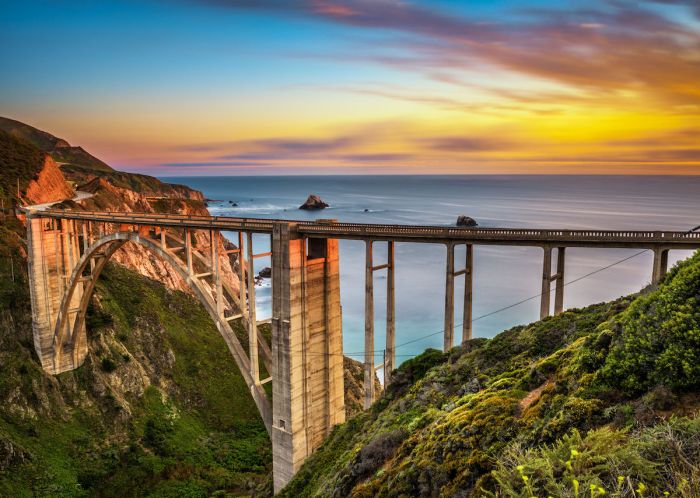
California offers a plethora of family-friendly destinations, catering to various interests and age groups. From theme parks teeming with excitement to tranquil coastal towns, there’s something for every family to enjoy. Planning a trip with children requires careful consideration of their needs and preferences, ensuring a memorable experience for everyone.Families seeking engaging adventures and enriching experiences will find California to be a fantastic choice.
By meticulously planning activities and accommodations, families can create lasting memories. This involves researching attractions and choosing destinations that align with the children’s interests and ages.
Best Family Theme Parks
California’s theme parks are renowned for their thrilling rides, captivating shows, and interactive experiences. These parks offer a wide range of attractions suitable for all ages, ensuring an enjoyable time for everyone. Disneyland Resort, Universal Studios Hollywood, and Six Flags Magic Mountain are among the most popular choices.
- Disneyland Resort: Offers classic Disney characters, enchanting storytelling, and thrilling rides. Perfect for younger children and families with a love for classic Disney stories. Expect long lines, especially during peak seasons, so planning ahead is crucial. Consider purchasing park tickets in advance and utilizing Genie+ service for quicker access to rides.
- Universal Studios Hollywood: Provides a unique blend of thrilling rides based on popular movies and television shows. The park offers immersive experiences and attractions that cater to a wider age range, making it a suitable option for families with children of diverse interests.
- Six Flags Magic Mountain: Known for its adrenaline-pumping roller coasters, this park is ideal for thrill-seeking families. It’s essential to consider the children’s tolerance for intense rides and ensure everyone is comfortable participating.
Kid-Friendly Coastal Towns
Coastal destinations in California provide opportunities for relaxing beach days, exploring tide pools, and engaging in water activities. These destinations offer a unique blend of relaxation and exploration.
- Laguna Beach: Offers scenic coastal walks, opportunities to spot wildlife, and various outdoor activities. Families can explore tide pools, visit art galleries, or simply relax on the beach.
- Monterey: Known for its beautiful beaches, the Monterey Bay Aquarium, and the 17-Mile Drive. This destination offers diverse attractions, catering to different interests and ages. The aquarium is a must-see for families interested in marine life. The 17-Mile Drive provides scenic views.
Family-Friendly Activities by Age Group
Planning activities based on age groups ensures a tailored experience for every member of the family.
| Age Group | Suggested Activities |
|---|---|
| Toddlers (1-3 years) | Soft play areas, interactive exhibits, stroller-friendly paths, and family-friendly restaurants with high chairs. |
| Preschoolers (4-5 years) | Playgrounds, petting zoos, kiddie rides, and age-appropriate shows. |
| School-Aged Children (6-12 years) | Theme parks, museums, science centers, sports activities, and nature trails. |
| Teenagers (13-17 years) | Theme parks, water parks, amusement parks, concerts, and movie screenings. |
Unique Experiences and Hidden Gems
California boasts a wealth of extraordinary experiences beyond the typical tourist hotspots. Delving into its hidden corners reveals a tapestry of unique attractions, quirky characters, and captivating natural wonders. This exploration unveils a deeper understanding of the Golden State, offering travelers a more authentic and memorable journey.Beyond the iconic landscapes and bustling cities, California harbors a treasure trove of lesser-known gems waiting to be discovered.
These hidden gems often offer a more intimate connection with the state’s diverse culture and environment. Uncovering these unique experiences is a rewarding adventure, enriching the travel experience and providing a deeper understanding of California’s true character.
California offers a plethora of amazing experiences, from hiking the majestic Sierra Nevada mountains to soaking up the sun on the stunning coast. One incredible way to explore California’s diverse landscapes is through the expertise of a local guide like maija de rijk uys , who can tailor your trip to your specific interests. From hidden gems to iconic landmarks, she’ll ensure you get the most out of your California adventure, making it a truly unforgettable journey.
Off-the-Beaten-Path Art Galleries
California’s art scene extends far beyond the major museums. Many independent galleries in smaller towns and cities showcase unique talents and styles. These establishments often feature local artists and provide a more intimate and personalized experience compared to large institutions. Exploring these galleries is a great way to uncover hidden artistic treasures and discover emerging talent.
Unique Museums and Collections
Beyond the mainstream museums, California is home to a diverse array of specialized museums. These establishments showcase unique collections, from vintage cars to quirky historical artifacts. These often-overlooked gems offer a chance to learn about specific interests and uncover fascinating aspects of California’s history and culture. For instance, the Petersen Automotive Museum in Los Angeles features an impressive collection of vintage automobiles, while the California State Railroad Museum in Sacramento provides insight into the state’s railway heritage.
Unique Events and Festivals
California’s vibrant cultural scene is further amplified by a multitude of local events and festivals. These gatherings often celebrate specific traditions, arts, or industries. For example, the Coachella Valley Music and Arts Festival draws massive crowds, while numerous smaller, community-based events provide an authentic taste of California’s diverse communities. Attending these events provides a unique opportunity to connect with local cultures and immerse yourself in the atmosphere.
Local calendars and community boards are excellent resources for finding these hidden gems.
Hidden Hiking Trails and Nature Reserves, Top things to do in california
California’s vast wilderness offers more than just well-trodden trails. Numerous hidden hiking trails and nature reserves provide opportunities for solitude and discovery. These secluded spots often offer breathtaking views, diverse wildlife, and a chance to escape the crowds. Many of these gems can be found through local hiking groups, nature organizations, or online forums dedicated to outdoor enthusiasts.
Thorough research and consulting local guides can help you find the most suitable trails for your experience level and preferences.
Tips for Planning a California Trip
California, a land of stunning landscapes and vibrant cities, beckons travelers from around the globe. From the golden beaches of the coast to the towering peaks of the Sierra Nevada, planning a trip requires careful consideration of various factors. This section offers practical advice on navigating the complexities of a California adventure, ensuring your trip is memorable and stress-free.Planning a California trip involves understanding the state’s diverse geography and attractions.
Different regions offer distinct experiences, requiring varying approaches to transportation, accommodation, and budgeting. This guide provides insights into optimizing your time and resources, allowing you to maximize your enjoyment of the Golden State.
Best Time to Visit
California’s diverse climate necessitates considering the best time to visit for optimal weather and fewer crowds. Spring (March-May) and fall (September-November) are generally the most popular times, offering pleasant temperatures and fewer tourists compared to peak summer. Summer (June-August) is ideal for outdoor enthusiasts but can be very hot and crowded, especially in Southern California. Winter (December-February) brings cooler temperatures and potential for rain, especially in coastal areas, but also offers a chance to experience the beauty of California’s landscapes in a less crowded environment.
Consider your priorities when choosing the best time to visit.
Transportation Options
California offers a wide range of transportation options, catering to various needs and budgets. Driving is a popular choice for exploring the diverse landscapes, allowing for flexibility and independence. Renting a car provides access to remote destinations and national parks. However, traffic can be heavy, particularly in urban areas. Public transportation systems, including BART, Metrolink, and Amtrak, are efficient and affordable in major cities.
Consider using ride-sharing services or taxis for short distances or when navigating unfamiliar areas. Alternatively, consider flying into major airports like LAX, SFO, or SAN and utilizing a combination of transportation methods for efficiency. A combination of approaches will provide the most flexibility in exploring the different regions.
Budgeting for Your Trip
Budgeting effectively is crucial for a successful California trip. Accommodation costs vary significantly depending on the region and the type of lodging. Luxury hotels can be expensive, while budget-friendly options, such as hostels or vacation rentals, offer more economical choices. Food costs depend on your dining preferences. Dining at upscale restaurants is more expensive than casual eateries.
Entrance fees to national parks and attractions should be factored into your budget. Create a detailed itinerary and estimate costs for each activity, accommodation, and transportation. This will help you manage your spending effectively.
Navigating California’s Landscapes and Attractions
California’s diverse landscapes present unique challenges and opportunities for exploration. Planning ahead is essential for maximizing your time and enjoyment. Check the operating hours and ticket prices for attractions in advance. Consider purchasing a California State Parks pass for discounted entry to state parks. Pack appropriate clothing and gear for the weather conditions you anticipate.
For example, if you plan on hiking in the mountains, bring sturdy hiking boots and layers of clothing. Understanding the terrain and specific requirements for different activities will allow for a more efficient and safe experience. California offers a wide array of experiences, requiring a detailed understanding of the region.
Final Conclusion
In conclusion, California’s allure extends far beyond its famous landmarks and iconic beaches. This journey through the Golden State has unveiled a tapestry of experiences, from the vibrant energy of its cities to the serene beauty of its national parks. Whether you’re a seasoned traveler or a first-time visitor, California promises a unique adventure. We hope this guide has provided valuable insights and inspiration for your next trip to the Golden State, ensuring you create lasting memories.
